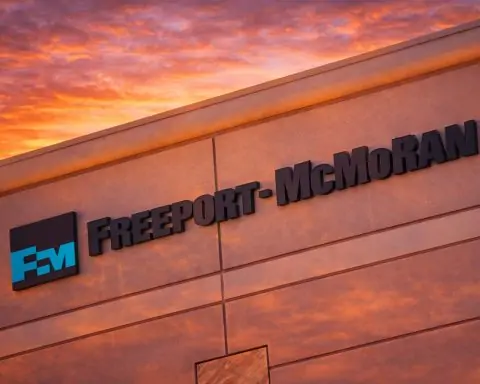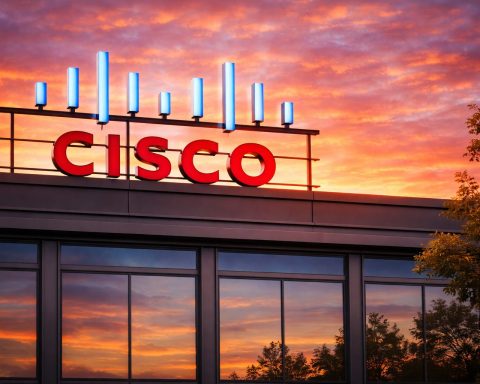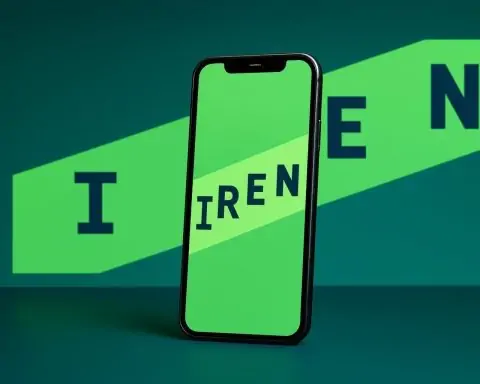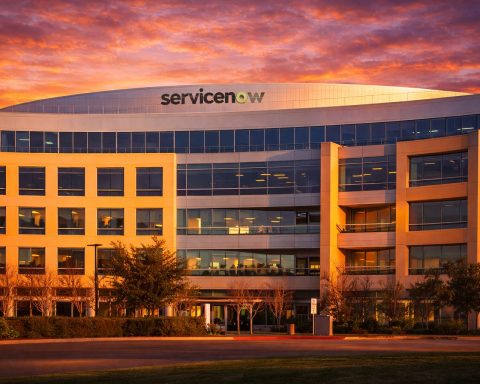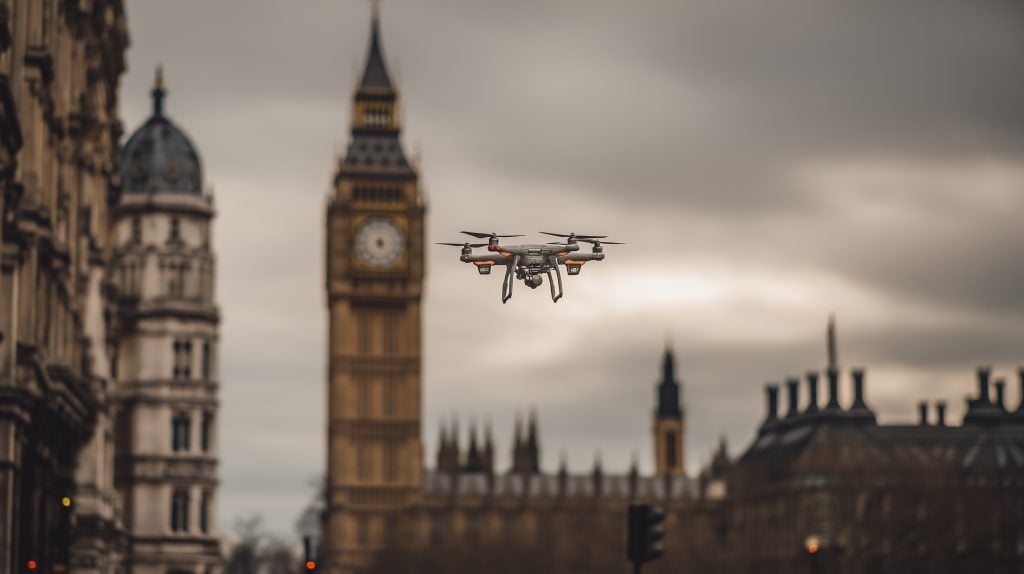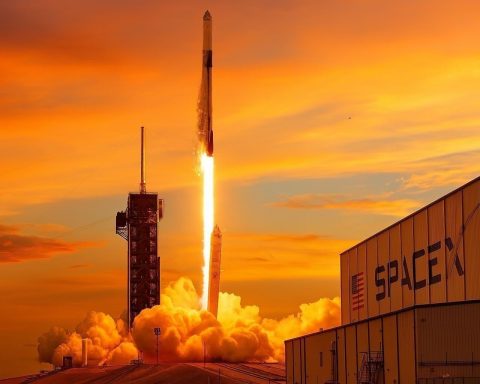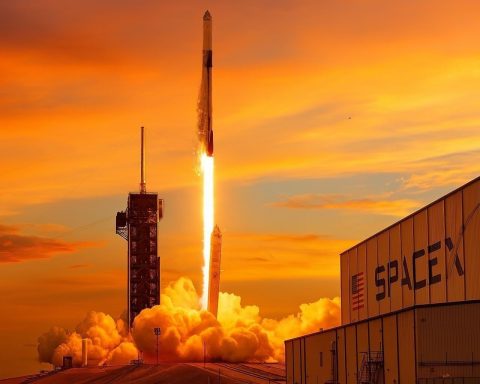- As of January 2024, Oman had 4.58 million internet users, representing 97.8% of the population.
- Median mobile data speed was 71.3 Mbps and fixed broadband speed 68.4 Mbps in January 2024.
- By end-2024, about 90% of housing units had fiber or high-speed broadband availability.
- Omantel held roughly 48% of mobile subscribers in 2024, Ooredoo about 45–50%, and Vodafone Oman around 10%.
- 5G deployment grew 19% in 2024, with Omantel achieving an average 5G download speed of 233 Mbps.
- In March 2025, the TRA licensed Starlink, making it widely available with residential plans around 30 OMR per month and 80–160 OMR for equipment.
- The Oman Australia Cable (OAC) is a 9,800 km fiber system launched in September 2022, linking Muscat to Perth.
- Omantel operates five international landing stations and participates in 14 major submarine cable systems, connecting Oman to 46 countries.
- Oman Broadband Company (OBC) runs the national fiber backbone with open-access wholesale to ISPs, expanding fiber reach to homes by 2024.
- The Universal Service Obligation (USO) program, launched in 2020, connects about 598 remote villages via SCT’s Ka-band high-throughput satellite, including over 100 rural schools and health centers.
1. Current State of Internet Access in Oman
Oman has made remarkable strides in expanding internet connectivity across the country. As of early 2024, an estimated 97.8% of Oman’s population were internet users, reflecting one of the highest penetration rates globally [1]. Nearly every adult in Oman has access to the internet, primarily through widespread mobile broadband and increasingly via high-speed fixed connections. Mobile phone usage is ubiquitous – active mobile subscriptions reached 7.5 million by the end of 2024 (about 144% penetration relative to population) [2] [3]. This indicates many residents carry multiple SIM cards or devices.
Broadband infrastructure has rapidly modernized. Over 90% of Omani households had a broadband internet service by end-2024, up from 85% a year prior [4]. Urban centers like Muscat enjoy extensive fiber-optic and 5G coverage, while even rural villages are increasingly getting connected via wireless or satellite solutions. Public Wi-Fi hotspots are common in urban areas (e.g. cafes, malls, airports), complementing personal mobile data use. The average quality of connectivity has improved significantly – median mobile data speeds are now 71.3 Mbps, and fixed broadband speeds about 68.4 Mbps, as of January 2024 [5]. These speeds are well above global averages and have risen over 30% year-on-year, reflecting network upgrades and 5G rollout [6].
Despite being geographically characterized by deserts and mountains, Oman’s population is highly urbanized (about 89% urban [7]), which has made it easier to achieve near-universal internet access. Remote and sparsely populated areas (roughly 11% of the population) historically lagged in connectivity, but targeted programs (discussed later) are bridging this gap. Overall, Oman’s current digital landscape is one of widespread internet availability, fast-improving speeds, and expanding access in even the most remote corners of the nation.
2. Key Internet Service Providers and Mobile Operators
Oman’s telecommunications market was long a duopoly, but it has recently become more competitive with new entrants. The major players providing internet access (via fixed or mobile services) include:
- Omantel (Oman Telecommunications Company) – the incumbent and largest telecom operator. Omantel offers fixed-line telephone, home broadband (ADSL and fiber), and nationwide mobile services (2G/3G/4G/5G). It is majority state-owned [8] and has historically dominated market share. As of 2024, Omantel still carries roughly half of the country’s mobile subscribers (around 48% share) [9] [10]. It operates extensive infrastructure, including international submarine cable landings and data centers. Omantel’s mobile arm (branded Oman Mobile) has led in network coverage and was first to deploy 5G in Oman.
- Ooredoo Oman – the second-largest operator, majority-owned by Qatar’s Ooredoo (formerly known as Nawras). It launched in 2005 as Oman’s first private mobile operator. Ooredoo provides mobile services and has also invested in fixed wireless broadband and fiber for homes. By 2023, Ooredoo actually slightly surpassed Omantel in mobile subscriptions (holding the largest share of mobile customers) [11], though their market shares are very close. Ooredoo is known for competitive mobile data packages and has rolled out 5G as well. Its coverage and service quality are comparable to Omantel in urban areas, and it competes heavily on pricing and customer service.
- Vodafone Oman – a new entrant, launched commercial service in January 2022 [12]. Vodafone Oman operates as the third mobile network operator (under a license won by a local consortium, Oman Future Telecommunications, in partnership with the global Vodafone Group). In just its first two years, Vodafone gained a notable foothold – by late 2024 it had captured around 10% of the mobile market share [13] [14]. Vodafone Oman offers 4G nationwide and is expanding 5G coverage. Notably, Vodafone users currently enjoy the fastest average mobile download speeds in Oman (~50 Mbps on average) due to an aggressive 4G/5G rollout [15] [16]. The entry of Vodafone has intensified competition, leading to better value plans for consumers and prompting the incumbents to improve their services.
- Awasr – Oman’s first specialized fixed broadband ISP, launched in 2015. Awasr focuses on high-speed fiber-to-the-home (FTTH) services in urban areas. It is the third licensed fixed broadband provider (after Omantel and Ooredoo) and markets plans up to 1 Gbps for residential and corporate customers [17]. Awasr remains a niche player but has been drawing customers from Omantel’s fixed-line business, contributing to the fixed broadband growth. Awasr also helped establish a local Internet Exchange Point (IXP) – OmanIX – to improve domestic internet traffic routing [18].
- MVNOs (Mobile Virtual Network Operators) – Oman was an early adopter of MVNO licensing. Two notable MVNO brands are FRiENDi Mobile and Renna Mobile (operated by Majan Telecom). They lease capacity from Omantel/Ooredoo and target price-sensitive segments (such as expatriate workers) with prepaid plans. MVNOs have a modest share of the mobile market but add to the competitive landscape. The growth of MVNO subscribers in recent years has also been a factor in overall mobile uptake [19].
- Oman Broadband Company (OBC) – While not a retail ISP, OBC is a government-owned wholesale provider rolling out the national fiber backbone and FTTH network. It builds infrastructure and then offers open access to retail ISPs (Omantel, Ooredoo, Awasr, etc.) on a non-discriminatory wholesale basis [20] [21]. This model has significantly expanded fiber broadband coverage. Thanks to OBC’s efforts, approximately 90% of housing units had fiber or high-speed broadband availability by 2024 [22]. OBC’s open-access approach underpins Oman’s strategy to avoid duplicative networks and ensure multiple service providers can serve customers over the same fiber infrastructure (improving competition in fixed broadband).
Table 1 below summarizes the major telecom providers and their roles:
| Provider | Services Offered | Market Position (Approx) | Notes & Developments |
|---|---|---|---|
| Omantel | Fixed telephony; Fixed Broadband (ADSL, Fiber); Mobile (2G/3G/4G/5G) | ~48% mobile share [23] (largest single operator); Largest fixed-line base | Incumbent operator, part-owned by state; investing heavily in 5G and international cables. |
| Ooredoo Oman | Mobile (2G/3G/4G/5G); Fixed Wireless; Fiber Broadband in some areas | ~45-50% mobile share [24] (neck-and-neck with Omantel) | Launched 2005; competitive data plans; expanding 5G and some FTTH via wholesale access. |
| Vodafone Oman | Mobile (4G/5G) only (new entrant) | ~10% mobile share (by 2024) [25], growing fast | Launched 2022; offers fast data speeds [26]; expected to drive prices down and innovation up. |
| Awasr | Fixed Broadband (FTTH) only | Small share of fixed broadband market | Launched 2015; focuses on high-speed fiber plans; helped establish local IXP (OmanIX). |
| MVNOs (FRiENDi, Renna) | Mobile (via host networks) | Small (~5% or less of mobile users) | Provide low-cost prepaid options; contribute to market competition in specific segments. |
(Note: Oman Broadband (OBC) operates as a wholesale-only provider of fiber infrastructure, enabling the above ISPs to deliver FTTH services.)
Oman’s telecom regulation encourages competition while the government maintains partial ownership or oversight of critical players (Omantel and OBC). The entrance of Vodafone and the presence of MVNOs have benefited consumers through lower prices and improved service quality. For example, Omantel’s mobile market share dropped from 53% to 48% during 2024 as customers tried alternative providers [27] [28], a clear sign of growing competition. All major operators are now investing in 5G networks, fiber expansion, and digital services to capture market share in a nearly saturated market.
3. Internet Penetration, Speeds, and User Demographics
Oman enjoys near-universal internet penetration. As of January 2024, there were about 4.58 million internet users, representing 97.8% of the population [29] [30]. This is a dramatic increase compared to a decade ago and is among the highest rates in the Middle East. Essentially, only around 2% of Oman’s population remains offline (around 100,000 people, likely those in very remote areas or older age groups) [31] [32]. The population is young (median age ~29) and tech-savvy, which has driven high uptake of smartphones and social media – about 84.8% of the population are active social media users [33].
In terms of demographics, Oman’s internet users include a large expatriate community (expats comprise ~40% of residents, skewing male). However, internet access is nearly equal for men and women in terms of availability. Urban residents (88.6% of the population) all have access to either home broadband or mobile internet [34]. Rural users (11.4%) historically relied more on satellite or 3G/4G wireless due to lack of fixed lines, but this gap is closing (discussed in Section 5). The government has also connected almost all schools to the internet, ensuring the younger generation is online – 97% of public schools are now covered by high-speed fixed broadband connectivity [35] [36], which greatly increases internet exposure among youth in every region.
Internet speeds in Oman have improved markedly. Ookla’s Global Speed Index at the start of 2024 reported median download speeds of 71.3 Mbps on mobile and 68.4 Mbps on fixed broadband [37]. These figures reflect extensive 4G/5G upgrades and fiber deployments. Mobile speeds in Oman outrank many Western countries – Oman was previously 48th globally in mobile speed in 2020 [38], and speeds have since doubled (with 5G, Oman’s mobile speeds are now among the top in the region, behind UAE and Qatar). Omantel’s 5G network delivers blistering peak downloads over 230 Mbps [39], and even Ooredoo and Vodafone offer 5G in the 100–180 Mbps range [40]. Fixed broadband speeds vary by connection type: legacy ADSL connections offer only a few Mbps and are being phased out, while FTTH plans typically range from 50 Mbps up to 1 Gbps. The median of ~68 Mbps indicates many households are on fiber or 4G/5G wireless broadband now [41]. Both mobile and fixed median speeds jumped 15–36% in the year 2023 alone [42], illustrating the ongoing network investments.
Affordability of internet service in Oman has been improving, though prices are higher than in some other regions due to the small market and previous monopoly conditions. Mobile data has become more affordable with competition – e.g., 1 GB of mobile data can cost as low as around 5 OMR (≈13 USD) on prepaid plans [43], and heavy-use packages offer better value. The Telecommunications Regulatory Authority (TRA) reported an 18% drop in average spend per subscription in recent years, indicating consumers are getting more data for their rials [44]. Fixed broadband still has a relatively high absolute cost (a typical 20–50 Mbps home fiber plan might cost 25–30 OMR per month (65–78 USD) [45]), but these rates are moderate given Oman’s high income levels. Moreover, the entry of new ISPs and technologies is expected to further enhance affordability. For instance, Vodafone’s market entry and the presence of an independent fiber wholesaler (OBC) put downward pressure on prices through competition. The government also keeps an eye on pricing; while there are no heavy subsidies, the TRA ensures tariffs are regulated to prevent excessive pricing in this vital sector [46] [47]. Overall, internet access in Oman is broadly affordable relative to income (the cost of a monthly broadband plan is roughly 1–2% of average household income) and is becoming more cost-effective each year.
4. Government Policies and Digital Transformation Programs
The Omani government has placed digital development at the center of its national strategy, most notably through Oman Vision 2040. Vision 2040 is a comprehensive blueprint for economic diversification and societal advancement, and digital transformation is a key pillar of this vision [48] [49]. The government’s goals under Vision 2040 include building a sustainable knowledge society, boosting the digital economy’s contribution to GDP (from about 2% in 2021 up to 10% by 2040) [50] [51], and ranking among the top 20 countries globally in e-government and digital services by 2040 [52].
To achieve these aims, Oman has launched several initiatives and policies:
- National Digital Economy Programme (“Tahweel”) – This is a coordinated program to drive digital transformation across government services and the economy. Launched in 2022, Tahweel provides strategic direction for ICT development, aims to increase the digital economy’s GDP share, and fosters e-government adoption [53]. By late 2024, the Tahweel programme had achieved ~73% of its planned performance targets (up from 53% the year before) [54], indicating rapid progress in digitizing government entities and services.
- E-Government and Services – Oman has made strides in e-governance, which also spurs internet usage. In the UN’s Government Electronic and Mobile Services Maturity Index (GEMS) 2024, Oman improved its score to 72% (up from 66% in 2023) [55]. This reflects greater availability of online government services, higher user uptake, and better citizen engagement online. The government’s one-stop portals and mobile apps now allow residents to access many services (health, education, business licensing, etc.) digitally. The focus on e-government has a twofold benefit: it improves administrative efficiency and incentivizes citizens to come online and develop digital skills.
- Telecom Liberalization and Regulation – The government, through the TRA (Telecommunications Regulatory Authority), has gradually liberalized the sector. Key policies included licensing a second mobile operator in 2005 (Ooredoo), allowing MVNOs (from 2009 onward), and licensing the third mobile operator (Vodafone Oman) in 2021 [56]. This pro-competition policy framework is largely responsible for the jump in mobile data offerings and coverage. The TRA also oversees spectrum allocation (e.g., releasing new 5G spectrum in mid-band and millimeter-wave) and infrastructure sharing. In 2024, TRA guided operators in the shutdown of 3G networks by end of 2024 to refarm spectrum for 4G/5G [57], a policy that improves efficiency. It also issued regulations for quality of service, consumer protection, and recently drafted a bylaw to facilitate new submarine cable landings (to enhance Oman’s role as a regional hub) [58].
- Infrastructure Investment and Universal Service – Oman’s government directly invested in foundational projects like Oman Broadband (OBC) to extend fiber nationwide on a wholesale basis [59]. This ensures even less-profitable areas get connectivity (subsidized by the state initially). The Universal Service Fund managed by the TRA also subsidizes telecom expansion in rural areas (e.g., funding mobile towers or satellite links in remote villages – see Section 5). Additionally, the government set up Oman Tower Company (OTC) to build and lease telecom towers, avoiding duplication of tower infrastructure among operators [60] [61]. These policies reflect a recognition that digital infrastructure is a public good that underpins economic growth.
- Digital Literacy and Inclusion – In line with Vision 2040’s human capital goals, there are government programs to improve digital skills in the population. Schools have been equipped with connectivity and devices; community training centers offer IT courses; and initiatives like SAS Center for Mobile Apps and other tech incubators encourage a tech-savvy workforce. The government is also mindful of inclusivity – ensuring women, rural communities, and persons with disabilities have access to online services and ICT training. As a result, Oman has a relatively narrow digital divide in terms of gender and income: almost all strata of society have access to mobile internet and the basic skills to use it (national surveys show high social media and smartphone usage across demographics).
Overall, Oman’s policy environment is conducive to internet growth. It balances state-led infrastructure development with promotion of private sector competition. The government actively seeks international best practices, evidenced by consulting global indices and organizations (UN, ITU, World Bank) to benchmark progress [62] [63]. Moving forward, Omani authorities plan to continue supporting emerging technologies (IoT, AI, cloud services) via strategies like the National AI and Advanced Technologies Strategy, all under the umbrella of Vision 2040. The regulatory stance is to enable innovation while safeguarding consumers, which bodes well for sustained digital advancement.
5. Rural vs. Urban Internet Access Gaps and Bridging Initiatives
Like many countries, Oman faces a challenge in extending equal internet access to its rural and remote communities. The vast majority of Oman’s population lives along the coastal cities and northern metropolitan areas (Muscat, Sohar, Nizwa, Salalah, etc.), which enjoy excellent connectivity. In contrast, remote inland deserts, mountain villages (e.g. in Al Hajar range), and some Bedouin communities historically had limited or no coverage. However, Oman has made significant progress in narrowing the urban-rural digital gap in recent years.
Urban areas: Nearly 100% of urban households have some form of internet access. Cities have extensive fiber-to-the-home coverage (Muscat in particular is extensively fiberized) and full 4G/5G mobile coverage. Public Wi-Fi hotspots are available in city centers. Urban users also have multiple provider choices (Omantel, Ooredoo, Awasr, etc.). As noted, ~90% of all homes nationwide had broadband by 2024, which implies essentially all urban homes are covered [64]. The average internet speeds in cities are higher than rural areas – gigabit fiber plans are available in Muscat, and 5G is concentrated in cities (one report noted about one-third of all 5G sites were in the Muscat governorate as of mid-2024) [65].
Rural areas: Oman’s rural population (~11% of total) tends to live in small villages scattered across difficult terrain. Laying fiber or even landlines to every village is often not economically feasible. To address this, the government and operators have employed a mix of wireless and satellite technologies to connect rural areas. Notably, all three mobile operators have built out coverage in most inhabited areas – mobile coverage (at least 2G/3G) reached over 95% of the population years ago. Now with the 3G shutdown, rural 3G towers are being upgraded to 4G, improving data speeds for rural mobile users [66] [67]. By end of 2024, 5,600 mobile base stations had been upgraded (many in less populated areas) and new spectrum bands (2300 MHz, 2600 MHz) assigned to boost rural capacity [68].
One flagship initiative is the Universal Service Obligation (USO) project for remote villages, launched in 2020. Under this program, the government contracted Space Communication Technologies (SCT) (a state-owned satellite company) in partnership with Oman Broadband to provide connectivity to about 598 remote villages and areas via satellite [69]. This project explicitly targets villages that are too isolated for terrestrial networks. SCT set up advanced Ka-band High Throughput Satellite (HTS) infrastructure to cover the entire country, and as of 2021–2022 it began connecting those villages, including over 100 rural schools and health centers, with broadband links [70]. Oman Broadband coordinates with local ISPs to deliver last-mile service in those communities, effectively creating a satellite-enabled open-access network for remote users [71] [72]. Thanks to this, residents in hundreds of small villages can now access e-government services, e-learning, and telehealth over the internet where previously only basic telephony existed [73].
Another approach has been using fixed-wireless and LTE/5G home routers in rural locales. Instead of running fiber, Omantel and Ooredoo offer wireless broadband plans where a home installs a 4G/5G router (CPE). For example, Ooredoo introduced a special rural wireless home broadband package at OMR 15/month for 250 GB (at up to 6 Mbps) to encourage uptake in less-connected communities [74]. Such plans, often discounted, have provided affordable internet to rural families using the cellular network. As 4G coverage is almost universal and 5G coverage is expanding beyond cities, these fixed-wireless solutions effectively bring broadband to rural areas without physical cables.
The results of these efforts are evident: by late 2024, 90% of Omani households had internet (so most rural homes are included here) [75]. Also, virtually all public schools (97%) are connected [76], many of which are in rural towns – meaning children in remote areas can access digital education on par with urban students. The remaining gap (the ~10% of households unserved) is likely to be closed in coming years through a combination of more cellular expansion and satellite coverage. Starlink’s entry (discussed next) will also play a role in offering high-speed options for the most isolated users.
In summary, while urban Oman enjoys fiber and 5G, rural Oman is increasingly served by 4G/5G and satellite backbones. The urban-rural digital divide, once a concern, has been substantially reduced by proactive policies. The government’s subsidized USO program and operators’ innovative use of wireless tech mean that even a village deep in the desert or atop the mountains can be online. Bridging this gap not only improves quality of life for rural residents but also helps preserve rural communities by giving them access to the same digital opportunities (online markets, e-learning, etc.) as the rest of the country.
6. Satellite Internet Availability in Oman
Satellite internet has become an increasingly important component of Oman’s connectivity landscape, complementing terrestrial networks – especially for remote and maritime connectivity. Historically, Oman relied on VSAT (Very Small Aperture Terminal) networks and regional satellite operators for niche connectivity (e.g., oilfield communications, naval ships, remote research stations). But recent developments have brought high-speed satellite internet to mainstream use, significantly boosting capacity and reducing latency.
Starlink in Oman: In March 2025, Oman’s TRA approved Elon Musk’s Starlink service to operate in the country [77]. Starlink (operated by SpaceX) uses a low-Earth orbit (LEO) satellite constellation to deliver broadband. With the license granted (Class 1 ISP license) [78], Starlink is now officially available across Oman. This is a game-changer for areas with limited connectivity – Starlink can provide speeds of up to 100 Mbps even in “off-grid” locations [79]. It offers nationwide coverage, including coverage of regions under the universal service mandate (the ~600 villages USO project), and even offshore into Omani territorial waters [80]. Starlink’s low latency (20-40 ms) allows real-time applications like video calls and online gaming, which older satellite systems struggled with [81].
The arrival of Starlink has been welcomed as it helps bridge connectivity gaps in Oman’s rugged and hard-to-reach regions [82]. Key sectors like oil & gas fields in the desert, mining sites, isolated tourist camps, and agriculture outposts are expected to benefit from reliable high-bandwidth links. Starlink is also being used to connect mobile towers in challenging locations – for example, instead of building expensive fiber backhaul to a mountain cell tower, the tower can use Starlink for backhaul, extending mobile coverage economically [83]. For individuals, Starlink’s residential service in Oman is priced around 30 OMR/month (≈78 USD), with a one-time hardware cost of 80–160 OMR for the dish kit [84]. While this cost is higher than a typical urban fiber plan, it is a viable option for those beyond the reach of any ISP. Starlink has also introduced business packages for enterprise and government clients that need higher throughput.
Other Satellite Services: Prior to Starlink, Oman utilized GEO (geostationary) satellite services. For instance, the USO satellite project (with SCT) leverages Ka-band capacity from high-throughput satellites to deliver internet in villages [85]. These satellites (possibly via partnerships with regional satellite operators) provide community Wi-Fi or local ISP links in remote areas at around 10–20 Mbps speeds. Omantel and Ooredoo have offered satellite broadband packages as well. Ooredoo’s “Satellite Home Internet” introduced in 2021 used a traditional satellite to offer 6 Mbps service with 250 GB data for rural homes [86]. While relatively slow, it was an affordable basic solution pre-Starlink. Thuraya, Inmarsat, and Yahsat are other satellite providers whose services (primarily satellite phones and narrowband data) have been used in Oman for specific needs like maritime communications, emergency services, or media broadcasting from remote locations. Thuraya phones, for example, are often used by desert nomads or remote workers for voice/text where GSM signals don’t reach.
Oman’s Own Satellite Program: Oman is also working on launching its first national telecommunications satellite, “OmanSat-1.” Space Communication Technologies (SCT) – the government arm for space – put out tenders for a high-throughput satellite to be in orbit by 2024 [87] [88]. The plan is to have OmanSat-1 cover the entire country (and beyond, including Oman’s economic waters) with Ka-band capacity, supporting both civilian broadband and government communications [89] [90]. The satellite would enable sovereign control over satellite services and potentially lower the cost of connectivity in rural areas (by not having to lease capacity from foreign satellites). As of mid-2025, this project is in progress – the satellite was anticipated by 2024, so launch may be imminent if not slightly delayed. Once operational, OmanSat-1 will integrate with ground infrastructure (primary control centers in Oman are being set up [91]) and further boost the country’s satellite internet capabilities. It is expected to support not just remote villages, but also provide backup connectivity for critical networks and extend internet to ships and aircraft.
Use Cases and Impact: Satellite internet in Oman serves several important use cases:
- Remote Communities: As discussed, villages beyond the reach of fiber or even mobile towers can get online via satellite. This curbs rural isolation and allows access to e-government, e-commerce, and telemedicine. It also facilitates educational opportunities (students in remote areas can follow online courses, especially critical as seen during COVID-19 when schooling went online).
- Oil & Gas and Mining: Oman’s oilfields and mineral exploration sites are often in the middle of the desert (e.g., the Empty Quarter). These operations require reliable data links for monitoring equipment (IoT sensors), coordinating logistics, and ensuring worker welfare (internet access for staff). Satellite links (VSAT and now Starlink) have been used extensively in these sectors. High-speed satellite links can also enable real-time data transfer from remote rigs to central offices.
- Maritime and Coastal: Oman has a long coast and a significant maritime industry (ports, fisheries, tourism boats). Satellite internet is used by ships at sea – Oman-based vessels can use services like Inmarsat or now potentially Starlink Maritime to stay connected offshore. Additionally, island communities (such as Masirah Island) or coastal areas with weak infrastructure can benefit from satellite backhaul.
- Disaster Recovery and Redundancy: Satellite serves as a backup in case of terrestrial network outages. For example, if a cyclone or floods damage fiber lines to a region (Oman occasionally faces cyclones in Dhofar and Al Batinah), satellite links can temporarily restore communications. Government agencies maintain satellite phones and backup links for emergency communications.
Challenges: While satellite internet greatly extends coverage, there are some challenges. Cost is a factor – equipment and subscription fees are higher than typical urban internet plans, which might be a hurdle for low-income rural households. The government may consider subsidies or community-shared terminals (e.g., a village Wi-Fi hotspot from one Starlink dish) to mitigate cost issues. Additionally, terrain can affect installation (mountainous terrain can block signals at low elevation angles, but Oman’s satellites use high elevation angles and Starlink’s mesh covers most angles, so this is manageable). Lastly, regulatory adaptation was needed: Oman had to establish a framework to license LEO constellations; TRA’s approval of Starlink indicates a supportive regulatory stance to new technology [92].
In conclusion, satellite internet – once a niche or last-resort option – is now a vital part of Oman’s broadband ecosystem. It ensures that no corner of Oman is left offline, aligning with the country’s digital inclusion goals. With both global providers like Starlink and its own satellite on the horizon, Oman is well-positioned to leverage the skies to connect the deserts.
7. Technological Infrastructure: Submarine Cables, Data Centers, National Fiber and 5G
Oman’s strategic geographical location (at the crossroads of Asia, the Middle East, and Africa) has enabled it to become a regional connectivity hub. Significant investments in submarine fiber optic cables, terrestrial fiber backbones, and data centers have bolstered both international and domestic internet infrastructure.
Submarine Cables: Oman is exceptionally well connected to the global internet via undersea cables. Omantel operates 5 international cable landing stations in Oman and participates in 14 major submarine cable systems [93]. These cables link Oman directly to 46 countries across Europe, Asia, Africa, the Middle East, and North America [94]. Major cable systems landing in Oman include:
- SEA-ME-WE cables: Several generations of the Southeast Asia-Middle East-Western Europe cables land in Oman, providing routes from Europe to Asia.
- AAE-1 (Asia-Africa-Europe-1): A 25,000 km cable connecting Hong Kong, Southeast Asia, the Middle East (landing in Oman), and Europe. Omantel was a key investor [95].
- EIG (Europe India Gateway): A cable linking Europe to India via Oman and other Middle East points.
- Gulf2Africa/2Africa: A huge upcoming cable (2Africa) circumnavigating Africa – Oman is a landing for a branch connecting east Africa and the Middle East, expected live by late 2024 [96].
- Oman–UAE cables: The Oman Emirates Gateway (OEG), a new 275 km cable between UAE and Oman data centers, was initiated in 2024 [97].
- Pakistan East Africa Connecting Europe (PEACE) and others: In mid-2024, work started on a network connecting Pakistan with UAE and Oman [98], reflecting Oman’s role in regional east-west connectivity.
- Oman Australia Cable (OAC): Launched in September 2022, this is a 9,800 km cable linking Muscat, Oman directly to Perth, Australia [99]. It provides a new low-latency route between Australia and Europe/Middle East via Oman [100], avoiding the congested Asia-Pacific pathways. OAC is significant as Oman is the first Gulf country with a direct link to Australia; the cable is owned by SUBCO with Omantel as landing partner [101]. A spur to Salalah (southern Oman) is also being added to that system [102].
Having this plethora of cables has multiple advantages for Oman. It ensures high international bandwidth capacity and route diversity, which translates to faster and more reliable internet for local users. Oman can source internet transit from various directions (Europe, Asia, Africa) with redundancy. It also allows Oman to monetize its location by selling transit capacity – indeed, Omantel has become a major wholesale carrier in the region. Notably, Omantel was the first GCC carrier to land a cable in Europe (Marseille) [103] [104], and maintains a point of presence/data center in Marseille, France to interconnect its cables to European networks [105]. With multiple new cables, Oman is poised to handle the surging data traffic of the region’s future (especially as Gulf countries develop cloud data centers and content hosting, needing robust external links).
National Fiber Backbone: Domestically, Oman has rolled out a comprehensive fiber optic backbone connecting all governorates. Oman Broadband’s National Broadband Initiative and Omantel’s fiber network together ensure that all major cities and towns are linked via high-capacity fiber rings. Fiber backhaul connects the thousands of mobile towers across Oman (over 5,600 base stations by 2024, many now 4G/5G-enabled [106]). Moreover, fiber-to-the-home/building deployment is extensive in populated areas – by early 2024, fixed broadband penetration (household basis) was ~78.9% according to the TRA [107], and the goal is to fiber-enable 75% of all buildings by 2025 [108]. In 2023–24, TRA even mandated the phase-out of old copper ADSL lines in favor of fiber in urban areas [109]. The backbone is not just along the coast – fiber links also run inland, connecting communities in Al Dakhiliyah, Dhahirah, and Dhofar to the core network. Oman’s national fiber grid, along with microwave links in hard terrain, underpins the high mobile coverage and links key facilities (airports, industrial zones, border posts) with reliable connectivity.
Data Centers and Cloud Infrastructure: To capitalize on its connectivity, Oman has invested in modern data centers. In partnership with global colocation leader Equinix, Omantel opened MC1, Muscat’s first carrier-neutral Tier III data center, in 2019. This facility is directly adjacent to submarine cable landing stations, making Muscat a convenient hub for international content providers [110]. More than half of the GCC’s subsea cables land in Muscat, and MC1 leverages this by offering cross-connects between cable systems and local networks [111] [112]. In 2022, Equinix and Omantel expanded with a second data center SN1 in Salalah (southern Oman) to serve as another cable landing and interconnection point [113] [114]. These investments enable global cloud and content companies to host in Oman (closer to regional end-users), improving latency and service quality.
Oman Data Park (ODP), a local cloud services provider, also operates multiple data centers (in KOM, Wattayah, and Duqm) offering cloud and hosting services. ODP and international players are supporting government and private sector cloud adoption, aligned with Vision 2040’s digital economy goals [115] [116]. The presence of an Internet Exchange (OmanIX, launched with Awasr and Omantel) encourages local peering of traffic, meaning Omani internet traffic can be exchanged locally without tromboning via international routes, which improves speeds for domestic content.
5G Deployment: Oman is among the leading Gulf countries in 5G rollout progress, though not as fast as the UAE or Qatar. Omantel and Ooredoo launched initial 5G networks in 2019, focusing on hotspots and fixed wireless broadband. By 2023, 5G expansion accelerated – the number of 5G sites doubled in 2023 alone [117]. As of mid-2024, 5G deployment had grown a further 19%, with about one-third of sites in Muscat and the rest covering other cities and towns [118]. Both Omantel and Ooredoo offer 5G home broadband routers as an alternative to fiber in some areas. Vodafone Oman, starting a bit later, initially focused on 4G but is also rolling out 5G (likely using its partners’ towers or new spectrum). By 2025, 5G is present in all governorates, though still being extended to full population coverage. The government has supported 5G by releasing spectrum (100 MHz blocks in C-band, etc.) at reasonable fees and encouraging operators to share towers to reduce costs. Early use cases for 5G in Oman include enhanced mobile broadband (higher speeds for consumers), as well as some enterprise use (e.g., port of Sohar running 5G pilots for smart logistics, oil companies testing 5G for IoT sensors, etc.). The high 5G speeds achieved – Omantel’s users see 233 Mbps average 5G downloads [119] – promise new applications like AR/VR, smart city sensors, and so on, as coverage improves. With 3G being shut down, resources are being refocused to bolster 4G and 5G even in rural pockets [120].
In short, Oman’s technology infrastructure backbone is robust and continually improving:
- International bandwidth is plentiful and diverse, ensuring resilience.
- The domestic fiber network and data centers provide a strong foundation for the country’s digital services and cloud computing growth.
- The rapid rollout of 5G and fiber access is bringing ultra-fast connectivity to consumers and businesses alike.
These developments position Oman not only to meet the needs of its population but also to act as a regional digital hub – attracting investment, hosting regional internet traffic, and interconnecting neighboring countries. Oman’s investment of 28% of telecom revenues back into infrastructure in 2024 (far above the global average of 15–20% reinvestment) underscores its commitment to staying at the forefront of technology [121] [122].
8. Future Outlook: Investments, Innovation, and Growth Areas
Looking ahead, Oman’s internet landscape is poised for further growth and innovation, driven by both government vision and market dynamics. Several key trends and potential growth areas can be identified:
- Continued Broadband Growth: The overall telecom service revenue in Oman is projected to grow at about 4.5% CAGR from 2023 to 2028 [123]. The main engine of this growth will be mobile data services (forecasted ~8% CAGR in revenue) [124] [125], as more people consume data-intensive content (HD video, cloud apps) and 5G adoption rises. Fixed broadband will also grow (~4.7% CAGR in revenue) on the back of expanding fiber subscriptions and perhaps new entrants or products [126]. By 2025 and beyond, as nearly all households come online, the focus will shift from connecting the unconnected to upgrading the connected – providing higher speeds, more reliable service, and affordable unlimited data options. We may see the introduction of 6G later in the 2030s, but in the near term, operators will maximize 5G potentials (massive MIMO, standalone 5G core, etc.) to enable innovations.
- Digital Economy Expansion: In line with Vision 2040, Oman expects its digital economy sector to dramatically expand. By 2040, 10% of GDP should come from ICT/digital sectors (up from ~2% now) [127] [128]. This will be fueled by growth in e-commerce, fintech, online services, and tech startups. Already, the government has introduced fintech regulations (for example, a new Payment Services Provider license was granted to Ooredoo’s fintech arm in 2024 [129]) to spur online payments. E-commerce is on the rise as internet penetration is high – more businesses will go digital and reach consumers via the internet. Oman is also focusing on digital entrepreneurship: initiatives like Oman Technology Fund and innovation hubs encourage startups in areas like IoT, AI, and cloud services. With better internet infrastructure, these startups can build and host services locally. The Oman Data Park and other cloud providers will underpin this, offering local cloud platforms for businesses and government, which is important for data sovereignty.
- Smart Cities and IoT: With widespread 4G/5G and fiber, Oman can implement smart city solutions. Muscat and other cities are exploring smart lighting, traffic management, and smart utility metering. The 72% jump in IoT connections (to 1.15 million IoT devices in 2024) [130] [131] shows growing machine-to-machine connectivity – things like smart electricity meters, connected cars (telematics units), and surveillance systems. Future investments will likely expand IoT infrastructure (such as NB-IoT and LoRaWAN networks for low-power sensors). This is also tied to Oman’s sustainability goals: smart grids, intelligent transport systems, and e-health services all rely on connectivity. The telecom operators are expected to develop more IoT platforms and enterprise services, moving up the value chain beyond just connectivity.
- Satellite and Space Ventures: Oman’s space ambitions will materialize further. If OmanSat-1 is successfully launched by ~2025-2026, it will be a springboard for more space projects – perhaps more satellites for earth observation or additional telecom satellites. The presence of a national satellite could spawn local satellite service industries and create jobs in space science. Meanwhile, the partnership with SpaceX Starlink could deepen – possibly setting up local gateways or joint initiatives (similar to how other countries are integrating LEO satellite into their universal service plans). The Middle East in general is eyeing satellite-enabled connectivity for aerial and maritime use (for instance, Qatar Airways’ adoption of Starlink on planes [132]) – Oman could follow suit to equip its airlines or support its nascent space sector.
- Regional Connectivity Hub: Oman will likely reinforce its role as a regional hub. New cables such as the 2Africa and PEACE systems will come online, routing more traffic via Oman. There are plans for additional terrestrial fiber links – e.g., connecting to Saudi Arabia’s network through new cross-border routes, or an eventual GCC-wide fiber ring. Omantel and other Omani providers can leverage this to provide ultra-low latency paths between Asia, Middle East, Africa, and Europe. This is attractive to global tech companies; we may see global cloud providers (like AWS, Azure) establishing nodes or data centers in Oman to capitalize on the connectivity (some have CDN nodes already in Oman). The Equinix MC1 and SN1 facilities will likely expand capacity as demand grows. All this means more foreign investment in Oman’s digital infrastructure, aligning with the Vision 2040 push for an innovation-driven economy.
- Affordability and Inclusion: As competition heats up (three mobile networks + MVNOs), consumers stand to gain from better prices. It’s expected that mobile data packages will continue dropping in cost per GB, and fixed broadband might see price rationalization (especially if Awasr and possible new fixed providers gain ground). The government might introduce targeted subsidies or free minimum service for low-income citizens eventually, to ensure 100% adoption (since 2% remain offline, efforts will focus on those – possibly elderly or disadvantaged groups – via digital literacy programs and affordable access schemes). Public Wi-Fi might be expanded in tourist areas and public spaces as well.
- Regulatory Evolution: The TRA will continue to update policies to foster innovation. One area of potential development is net neutrality and content regulation – ensuring open internet while also managing content concerns. Oman so far has had a relatively open internet compared to some neighbors (with some censorship of morally objectionable content, but business and social media are widely accessible). As internet usage grows, regulations around cybersecurity, data privacy (perhaps a personal data protection law), and cybercrime prevention will be strengthened. Oman has already invested in cybersecurity measures to protect its digital infrastructure, given the rising importance of online services.
In conclusion, Oman’s digital future looks bright. The combination of a tech-embracing youth population, strong government vision, and heavy infrastructure investments sets the stage for Oman to transform into a regional digital leader by 2040. The “connected deserts” of Oman – once isolated expanses – are rapidly being integrated into the global digital community. From the depths of the ocean (subsea cables) to satellites orbiting above, Oman is leveraging every layer of technology to ensure that the internet becomes as pervasive and reliable as any other utility. This bodes well for economic diversification, social development, and innovation in the Sultanate in the years to come.
Sources:
- Oman’s internet penetration and user statistics [133] [134]
- Mobile and fixed broadband speed averages in Oman [135]
- Competition and market share of Omantel, Ooredoo, Vodafone [136] [137]
- Government digital transformation initiatives – Vision 2040 and Tahweel program [138] [139]
- TRA data on telecom sector growth and infrastructure coverage (schools, households) [140] [141]
- Universal Service satellite project for 598 villages [142] [143]
- Starlink’s licensing and capabilities in Oman [144] [145]
- Submarine cable connectivity (Omantel landing stations and cables) [146]
- Oman Australia Cable details [147] [148]
- 5G network expansion and 3G shutdown plans [149] [150]
- Oman telecom sector statistics 2024 (mobile users, IoT, investment) [151] [152]
- Omantel’s market position and competition impact [153] [154].
References
1. datareportal.com, 2. www.zawya.com, 3. www.zawya.com, 4. www.zawya.com, 5. datareportal.com, 6. datareportal.com, 7. datareportal.com, 8. www.agbi.com, 9. www.agbi.com, 10. www.agbi.com, 11. www.globenewswire.com, 12. www.budde.com.au, 13. meatechwatch.com, 14. www.agbi.com, 15. www.opensignal.com, 16. www.opensignal.com, 17. www.datacenterdynamics.com, 18. www.budde.com.au, 19. omdia.tech.informa.com, 20. omanbroadband.om, 21. www.omanobserver.om, 22. www.zawya.com, 23. www.agbi.com, 24. www.globenewswire.com, 25. www.agbi.com, 26. www.opensignal.com, 27. www.agbi.com, 28. www.agbi.com, 29. datareportal.com, 30. datareportal.com, 31. datareportal.com, 32. datareportal.com, 33. datareportal.com, 34. datareportal.com, 35. www.zawya.com, 36. www.zawya.com, 37. datareportal.com, 38. www.muscatdaily.com, 39. www.opensignal.com, 40. www.opensignal.com, 41. datareportal.com, 42. datareportal.com, 43. gigago.com, 44. tra.gov.om, 45. www.expatistan.com, 46. virginradiooman.com, 47. www.opensignal.com, 48. www.omanobserver.om, 49. www.omanobserver.om, 50. www.omanobserver.om, 51. www.omanobserver.om, 52. www.omanobserver.om, 53. www.omanobserver.om, 54. www.omanobserver.om, 55. www.omanobserver.om, 56. www.budde.com.au, 57. www.opensignal.com, 58. www.submarinenetworks.com, 59. omanbroadband.om, 60. www.budde.com.au, 61. www.budde.com.au, 62. www.omanobserver.om, 63. www.omanobserver.om, 64. www.zawya.com, 65. www.budde.com.au, 66. www.opensignal.com, 67. www.zawya.com, 68. www.zawya.com, 69. www.omanobserver.om, 70. www.omanobserver.om, 71. www.omanobserver.om, 72. www.omanobserver.om, 73. www.omanobserver.om, 74. thegulfobserver.com, 75. www.zawya.com, 76. www.zawya.com, 77. www.capacitymedia.com, 78. www.samenacouncil.org, 79. www.capacitymedia.com, 80. www.capacitymedia.com, 81. www.samenacouncil.org, 82. www.samenacouncil.org, 83. www.capacitymedia.com, 84. www.samenacouncil.org, 85. www.omanobserver.om, 86. thegulfobserver.com, 87. timesofoman.com, 88. timesofoman.com, 89. timesofoman.com, 90. timesofoman.com, 91. timesofoman.com, 92. www.capacitymedia.com, 93. www.omantel.om, 94. www.omantel.om, 95. www.omantel.om, 96. www.budde.com.au, 97. www.budde.com.au, 98. www.budde.com.au, 99. en.wikipedia.org, 100. en.wikipedia.org, 101. en.wikipedia.org, 102. en.wikipedia.org, 103. www.omantel.om, 104. www.omantel.om, 105. www.omantel.om, 106. www.zawya.com, 107. oxfordbusinessgroup.com, 108. www.budde.com.au, 109. www.omanobserver.om, 110. www.equinix.com, 111. www.equinix.com, 112. www.equinix.lat, 113. www.equinix.com, 114. www.datacenterdynamics.com, 115. www.zawya.com, 116. www.omandatapark.com, 117. www.budde.com.au, 118. www.budde.com.au, 119. www.opensignal.com, 120. www.opensignal.com, 121. www.zawya.com, 122. www.zawya.com, 123. www.globenewswire.com, 124. www.globenewswire.com, 125. www.globenewswire.com, 126. www.globenewswire.com, 127. www.omanobserver.om, 128. www.omanobserver.om, 129. www.budde.com.au, 130. www.zawya.com, 131. www.zawya.com, 132. www.samenacouncil.org, 133. datareportal.com, 134. datareportal.com, 135. datareportal.com, 136. www.agbi.com, 137. www.globenewswire.com, 138. www.omanobserver.om, 139. www.omanobserver.om, 140. www.samenacouncil.org, 141. www.samenacouncil.org, 142. www.omanobserver.om, 143. www.omanobserver.om, 144. www.capacitymedia.com, 145. www.capacitymedia.com, 146. www.omantel.om, 147. en.wikipedia.org, 148. en.wikipedia.org, 149. www.budde.com.au, 150. www.budde.com.au, 151. www.zawya.com, 152. www.zawya.com, 153. www.agbi.com, 154. www.agbi.com

